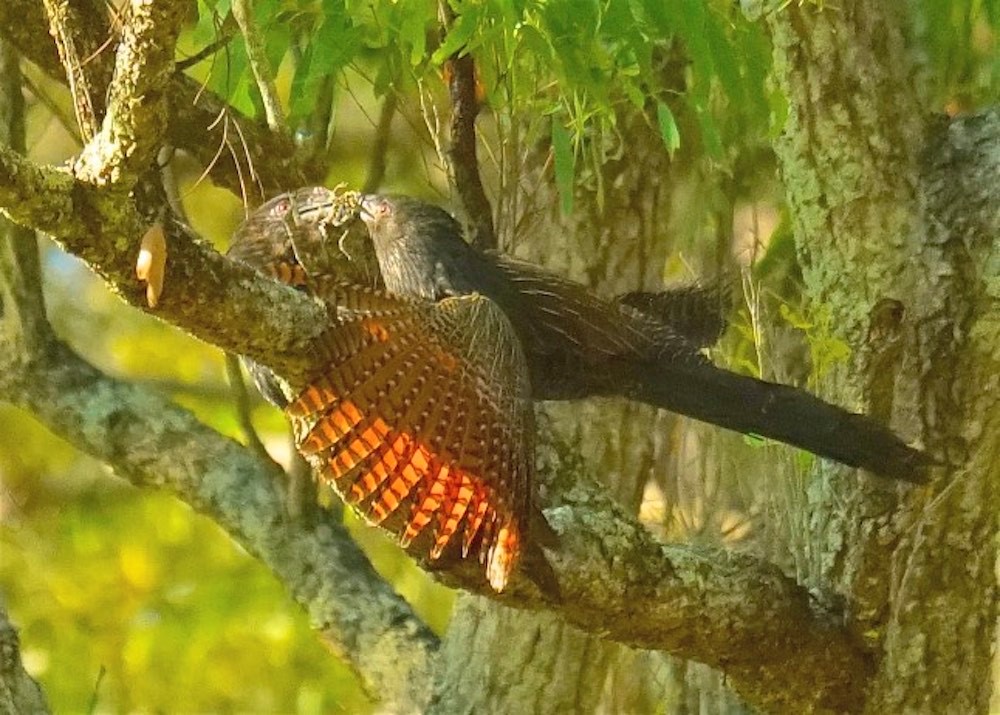Pheasant Coucal
We have a pair of Pheasant Coucals living up the hill behind our house. They are not true Pheasants and were previously included in the Cuckoo family. Recent investigations have shown significant differences in their biology, and they don’t lay eggs in other species nests, so their family is now usually split from the Cuckoos.
Coucals are known for their monogamous, stable territorial relationships. I often see them catching large insects and frogs, but they also are known to prey on eggs, chicks, lizards, rats, mice, frogs, and snakes. They are mainly ground predators moving through the long grass either ambushing or using a rather clumsy looking “flush and rush” technique. The male assumes black colouration during breeding. The nest is in long grass usually among lantana scrub. The male “bribes” the female with a food offering during copulation. In the photo he is offering a frog.
 Pheasant Coucal Photo: Ed Frazer
Pheasant Coucal Photo: Ed Frazer
The female leaves him to do the incubation of the eggs and most of the feeding of the 3 or 4 chicks. After hatching they are fed in the nest for about 8 days and then they follow the male for 2 months before being driven out of the parents’ territory.
I usually see the two Coucals several metres apart calling to each other during the day. They have a distinctive, booming ‘Ooop Ooop’ call that travels long distances. When they are not hunting, they often sit in trees. I have seen them sunbathing in trees with both wings and their tail outspread. A very pretty sight. They are aware of my presence if I approach and will fly into a tree. As I get nearer, they try to hide behind branches of foliage while watching me intently and will fly off about 50 metres to another tree if I get too close.
The Coucal is an interesting bird and is found throughout Brisbane in suitable grassland habitat with a few trees.
Ed Frazer
Published in



